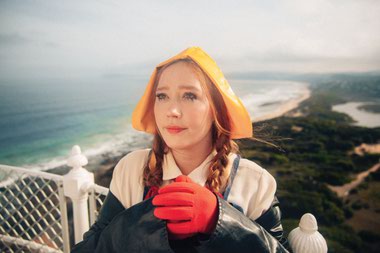We’re all spending a lot more time inside our homes these days, and our surroundings play an important role in creating our mood and our mindset. Color, for instance—on the walls, of accessories or created by lighting—can evoke many feelings, from happiness to serenity to excitement. It’s a critical element in the interior design of our home, as many believe it can actually impact our well-being.
Megan Victoria, a gemologist who studies color, goes beyond what the eye can see and really parses the underlying nature of color and how it affects our moods. “When I look at color, what I’m doing is looking at its actual wavelength,” she says. “It’s photons and light. The easiest way to see it is to think of a guitar string; when you pluck a guitar string on the lower end, you get a deeper resonation. Those wavelengths are smoother. They have slow rolling hills, not very high highs, not very low lows. They’re even and they’re steady, and they carry on like bass lives in your body two days after going to a concert. Whereas you get into the higher wavelengths, you get bigger highs, lower lows, and they’re not as stable. They tend to fishtail out like when you’re riding a bike and you lose control.”
As you might recall from high school physics, the upper end of the rainbow—red, orange, yellow—have longer wavelengths and shorter frequencies, while blues and violets sit on the lower endand shorter wavelengths and higher frequencies. What that means, in practical terms, is that colors with shorter frequencies tend to evoke excitement and fevered emotion, while higher-frequency colors bring about calmness. In different parts of our homes, we want to create different feelings, says Sandra Mijan, a local interior designer.
“Blue is one color that I use a lot, just because I think it’s such a beautiful, calm, relaxing color,” Mijan says. “Orange makes you hungry, [so] it’s great for kitchens.”
Victoria echoes blue’s calming powers, saying it’s a good choice for rooms where you do your focus work, like a home office. “If you need to stay home and work, or get on Zoom for school, blues and indigo are the cerebral colors. They’re good to keep your focus, they’re really good to keep your mind expanded and they’re good for serenity, because it calms the mind and allows the mind to settle.”
People are often afraid of making bold color changes in their homes, Mijan says, with many opting for bare, beige or gray walls. “I think they’re afraid they’re going to get tired of it. … I tell them, ‘Well, let’s then bring color with your pillows, or bring color with your art, or let’s buy a colorful rug.’ … There are ways to do it. Pillows are always the best place. You can buy an inexpensive pillow at Home Goods and replace them seasonally if you want. So it’s really how open you are to color and how it transforms any room.”
Smack-dab in the middle of the spectrum is green, which serves to counteract color wavelengths—especially in the desert, where the intensity of the sun is highly pronounced, according to Victoria. “Green is the color of neutrality,” she says. “It’s somewhere between the yellow and the blue of the intense high up and down. So a lot of people like myself use a lot of plants in the home.”
Victoria also points out that green is often used in hospitals, because people believe in its healing properties. “Cross-culturally, all the colors have different symbols, but when you remove culture and you look at science, green is the color of chlorophyll. … Plants are the one living thing on this earth that is pure reciprocal healing. As we breathe, they breathe. As they breathe, we breathe. It’s that fundamental. Everything we do with plants is an exchange. And it’s fair. So it’s really grounding.”
And if you’re skeptical of how, exactly, color affects your moods, both Victoria and Mijan point to the ways businesses incorporate color theory in their logos and interiors. “Every brand-name logo is made in a certain color, because that color evokes some emotion—orange being a friendly color, red being exciting and bold, blue stands for trust,” Mijan says. Think of the blues in banks or the reds and oranges in gyms, where high energy is the goal.
Mijan cautions her clients to avoid trends when choosing colors for their homes, as those tend to make interiors look dated in a few years. Instead, she advises to choose colors that resonate with them while playing up their creativity and stretching beyond their comfort zone.
“Everyone plays it safe,” she says. “If they can handle it, I just push and tell them, ‘The color is going to make you feel better. When you walk into this space, it’s going to feed you good energy.’”








